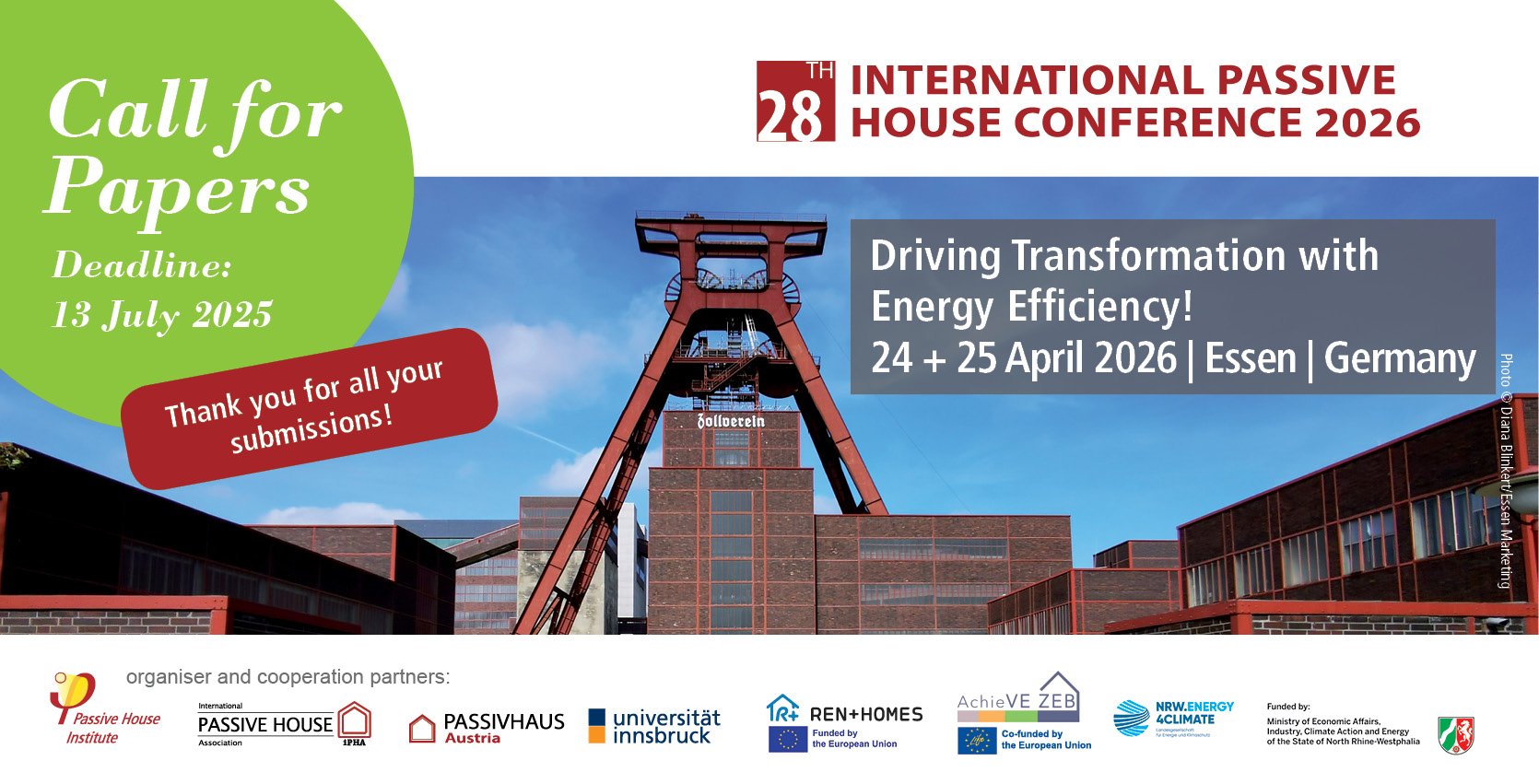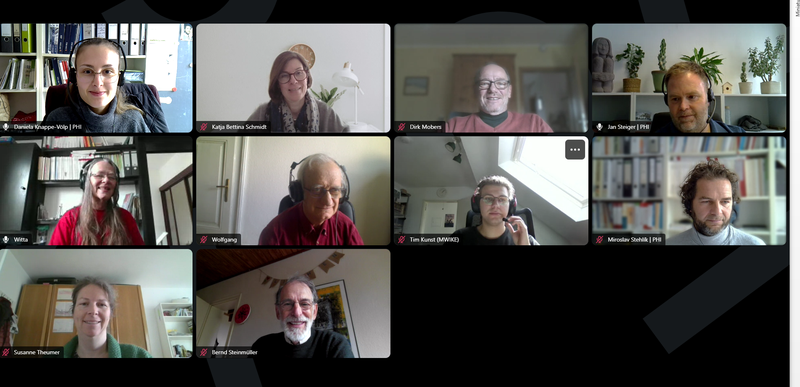
Thank you for so many promising abstract submissions!
You can expect to receive an e-mail with the selection results in October/November 2025.
We are looking forward to creating an exciting, inspiring programme for the 28th International Passive House Conference with you!
For every International Passive House Conference, we receive more than one hundred contributions on Passive House and EnerPHit projects from all over the world. The independent Scientific Advisory Board evaluates the submissions and then selects 40 to 50 contributions based on a ranking procedure in the course of their advisory board meetings which usually span several days. You can look forward to an exciting programme!
Burrell, Elrond | VIA architecture
Ebel, Witta | Passive House Institute
Feist, Wolfgang | Passive House Institute
Kuang, Wei | Passive House Institute
Kuhne, Inga-Lill | ecolearn
Levenson, Ken | The Passive House Network
Lewis, Sarah | Passivhaus Trust
Mc Carron, Barry | KORE Retrofit
Mobers, Dirk | Verbraucherzentrale NRW
Petersdorff, Carsten | NRW.Energy4Climate
Pfluger, Rainer | University of Innsbruck
Sanchez, Marine | RDH Building Science
Schmidt, Katja Bettina | Ministry for Economics, Industry, Climate Protection and Energy of North Rhine-Westphalia
Sibille, Elisabeth | Austrian Energy Agency
Steiger, Jan | Passive House Institute
Steinmüller, Bernd | BSMC
Style, Oliver | Praxis Resilient Buildings
Theumer, Susanne | Passive House Institute
Troi, Alexandra | Hochschule Coburg
Tzanev, Dragomir | EnEffect
Winkel, Susanne | Passive House Institute

The following thematic groups were included in the Call for Papers form:
Fast and easy retrofits for a successful transformation of the building stock
Serial renovation
Highly energy-efficient components taken a step further
Ventilation solutions for new builds and retrofits
Split units and heat pumps for the electrification of new builds and retrofits
Cost-effectiveness of high energy efficiency measures
Large buildings and / or non-residential buildings to the Passive House or EnerPHit standard
Special use cases or challenging climatic conditions
Supplementary sustainability assessments of highly energy-efficient buildings
PHPP and add-on tools
Solutions for districts
Technologies for energy-positive buildings
Thermal insulation and renewable energy supply going hand in hand
Training, capacity building, energy consulting and dissemination
Regulations and incentives
Comparison of standards
Transformation highlights: Successful building projects from North Rhine-Westphalia and Germany
Other
Did you miss this year's call for papers?
We would be delighted if you submitted your abstract to the Call for Papers for the next International Passive House Conference!